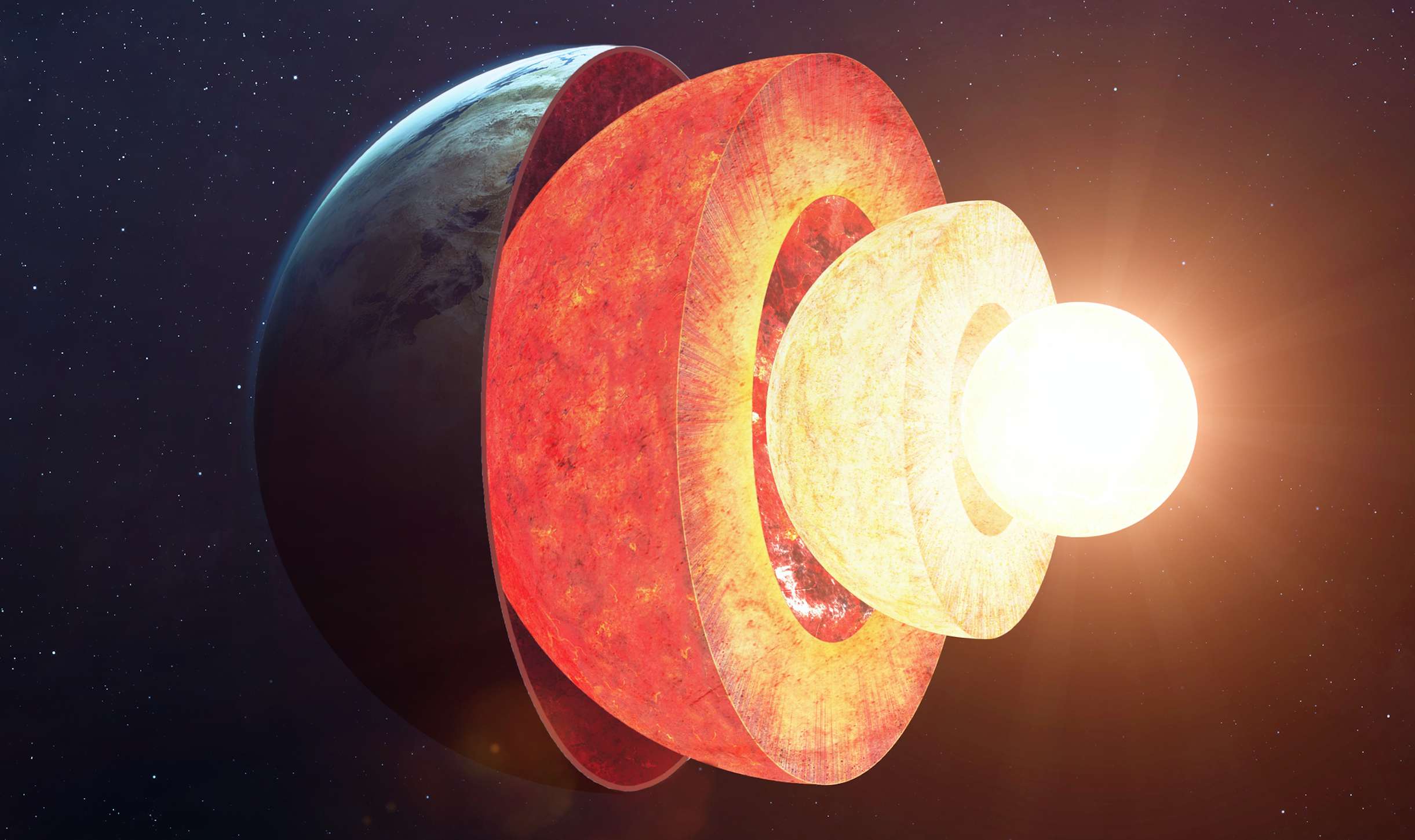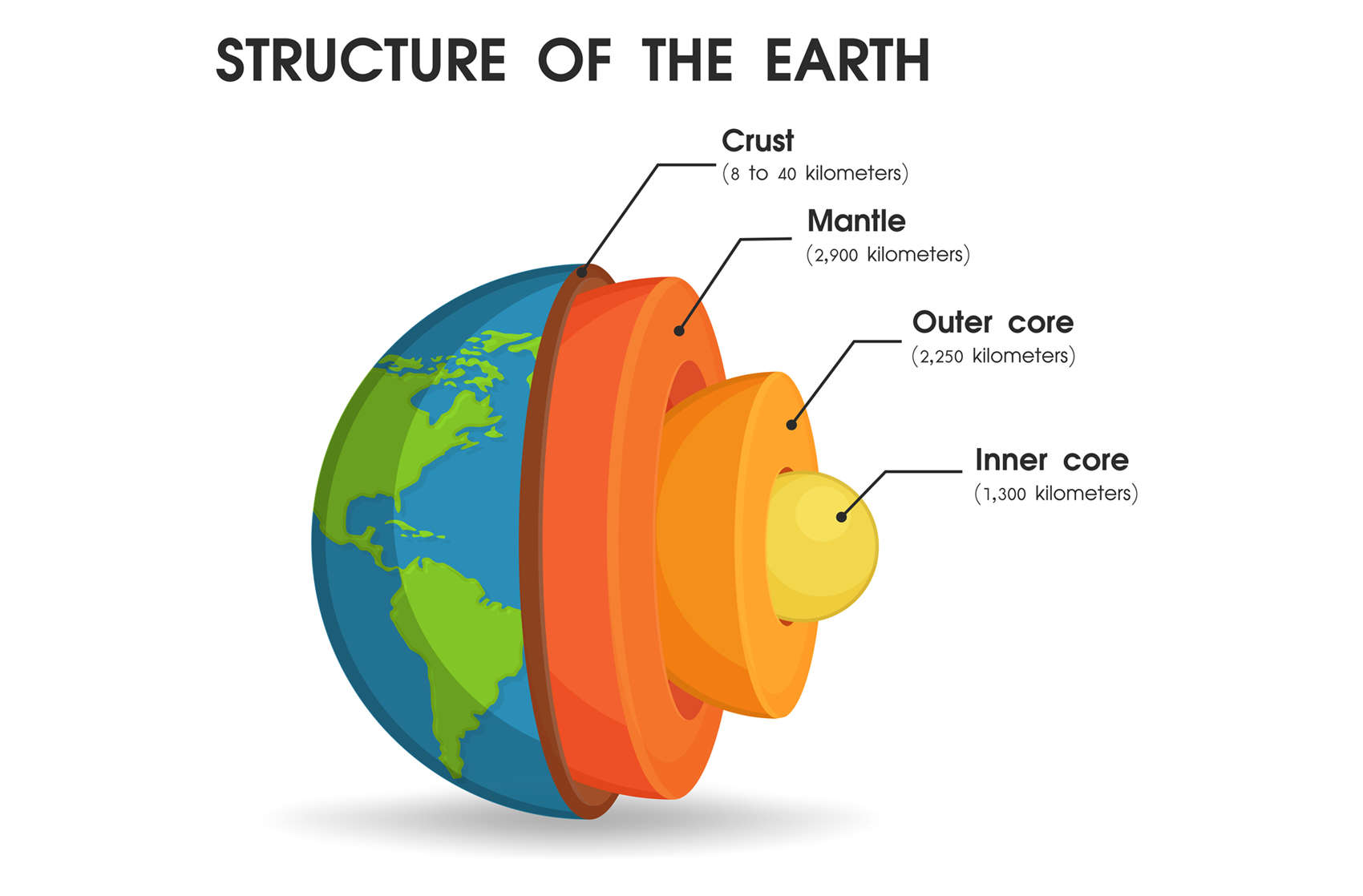Create a free profile to get unlimited access to exclusive videos, sweepstakes, and more!
Earth's solid inner core may be a little bit mushy

I know that I usually write about stuff you have to look up to see, but I also like to learn about what's going on under my feet. I'm biased; like most of you I live on a planet.
So I was fascinated to read that new findings imply that the Earth's inner core may not be entirely solid, and instead might have a mushy layer up to 250 kilometers deep in its upper reaches, and there could be both solid and liquid bits mixed in that layer as well.
OK, let's back up a bit. The Earth is not just a solid ball of stuff, but instead has layers. The outermost layer is the crust: solid rock that varies from a few kilometers thick under the ocean up to a hundred or so at its thickest under continents. The USGS site uses the great analogy of the Earth as an egg; with a crust so thin compared to the planet's 12,700 kilometers diameter it's like an egg's shell.
Underneath that is the mantle, which is made of very hot but still solid (not liquid, as it's commonly misrepresented) rock, going down to a depth of about 2,900 km. This is the white of the Earth egg.
Under that is the core (the yolk, of course). It has two layers: a liquid iron outer core over 2,200 km thick, and a solid iron inner core about 1,300 km in radius. Temperature increases as you get closer to the Earth's center, and so you might at first think the inner core should be liquid, but pressure increases as well. That changes the chemistry and physical behavior of the materials. Near the center the pressure is so huge (3.6 million times the air pressure at sea level) that iron and the other constituents of the inner core (like nickel) become solid. Farther out from the center the pressure eases up a little and the material can become liquid.
If you're like me, you probably think of these layers as distinct and with somewhat smooth boundaries. I blame diagrams. These are of course incredibly useful to help us understand what's what, but they also perforce oversimplify the situation, in this case showing smooth, clean lines separating the layers. Also in their defense, the Earth is immense and a diagram compresses the scale, so if there are any fuzzy borders they'd still look sharp. Still, in my head I picture the inner core like a shiny ball bearing (or a very brightly glowing one since it's about as hot as the surface of the Sun) that's very smooth.
And here's where the new research comes in. What we know about the Earth's guts comes mostly from earthquakes. When a quake strikes, a huge amount of energy is released that travels through our planet's interior as waves, in a sense making it ring like a bell.
This is incredibly useful: Some kinds of waves can travel through both solid and liquid material, while some only travel through solids. That's how the liquid outer core was discovered, in fact — the second kind of waves didn't pass through them.
This gets complicated quickly, but waves can reflect off of some things, like boundaries between layers, and can refract (bend) around others, changing their direction.
In the new work, the scientists looked at five sets of earthquakes where there happened to be seismic detectors at or very near the antipodes, the exact opposite point on the other side of the Earth (click that for some fun). When the wave from a given quake moves through the Earth it passes through the outer core and hits the outer/inner core boundary. It refracts as it does so, and that boundary acts like a lens, focusing the waves so that the energy is amplified when it reaches the detector (just like a lens can make a faint object like a star appear brighter). This allowed the scientists to study the physical details of that boundary and see how it behaves.
What they found is that the waves didn't act as if the upper part of the inner core (where it meets the outer core) were solid. Instead, it was better explained if the outer 100–250 km of the inner core were mushy, like a slurry or slush. Their observation indicated that there were solid parts, liquid parts, and mushy parts all adjacent to one another.
So why is this important? The inner and outer cores drive a lot of the motion and behavior of the Earth's interior. For example, although not completely understood, the outer core generates the Earth's magnetic field as the material moves around, and is modified in part by the inner core. When the Earth first formed heavier material like nickel and iron sank to the center while lighter stuff like rock floated to the top. The thickness of the inner and outer cores depends on how that material behaved, so understanding the cores helps us understand how the Earth formed. And, of course, the heat trapped in the cores warms up the mantle — the crust floats on top of that and so the heat transfer powers tectonic plate motion, earthquakes, volcanoes, and more.
All of this may seem esoteric and literally deeply hidden, but it has a direct and profound effect on all of us, every single day.
If the outer core's upper layer is gloppy that changes how we think these layers interact, and that means it changes the way we think of the Earth as a dynamic system. And the Earth is a very dynamic system, as the Cumbre Vieja eruption on La Palma has been reminding us now for about three weeks now as I write this.
The lesson here is that it's a big planet — about a trillion cubic kilometers of it — and even though we've mapped nearly the entire solid surface of Earth, the details of what's happening just a few kilometers down can be almost entirely hidden. Yet in some cases we can get a view of the landscape nearly 6,000 kilometers beneath our feet through the clever use of geometry and science.
Also, beware of the picture of something you carry around in your head. It might be close to reality, and even useful, but it can also be misleading. And that might apply to far more things than just geology.
















